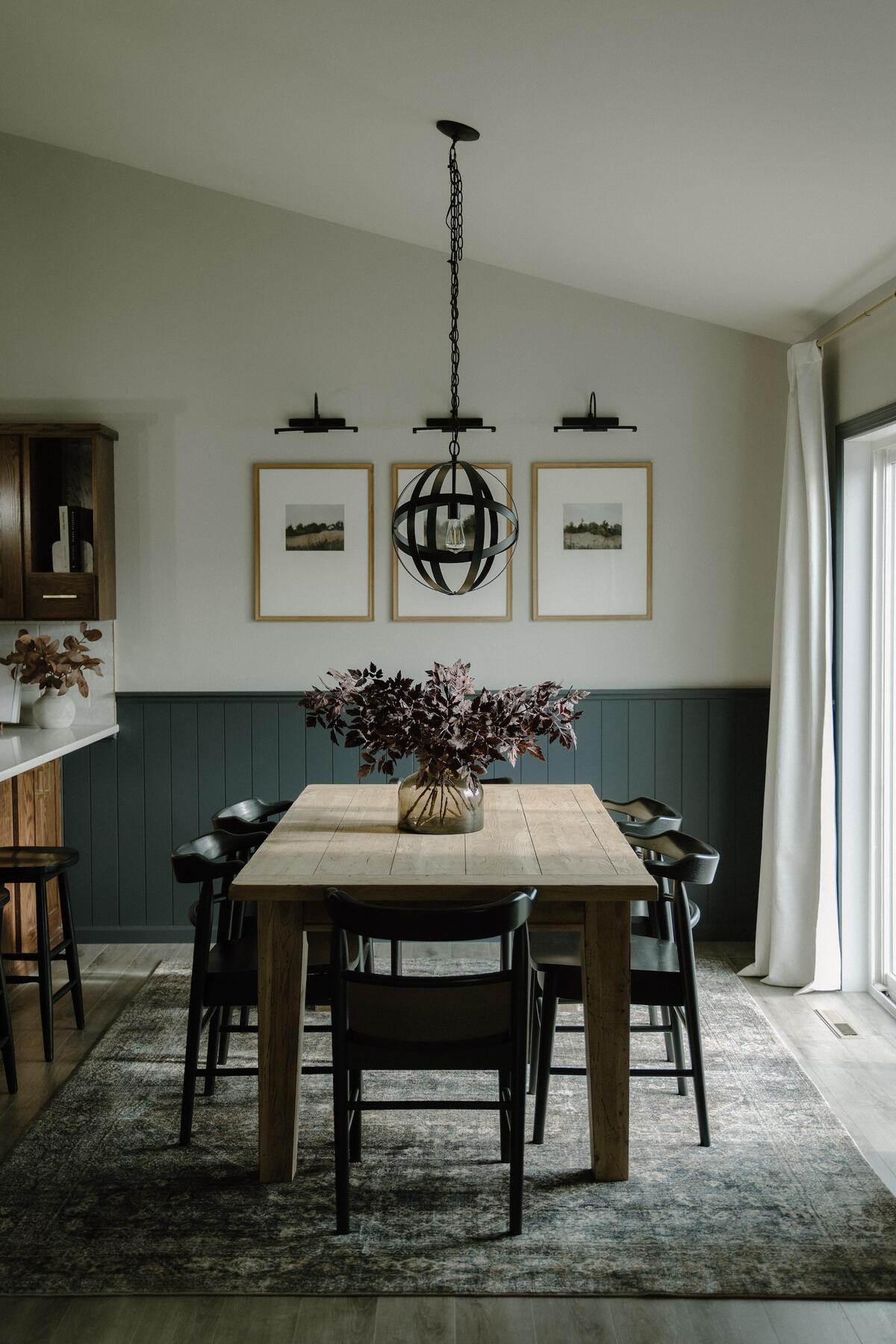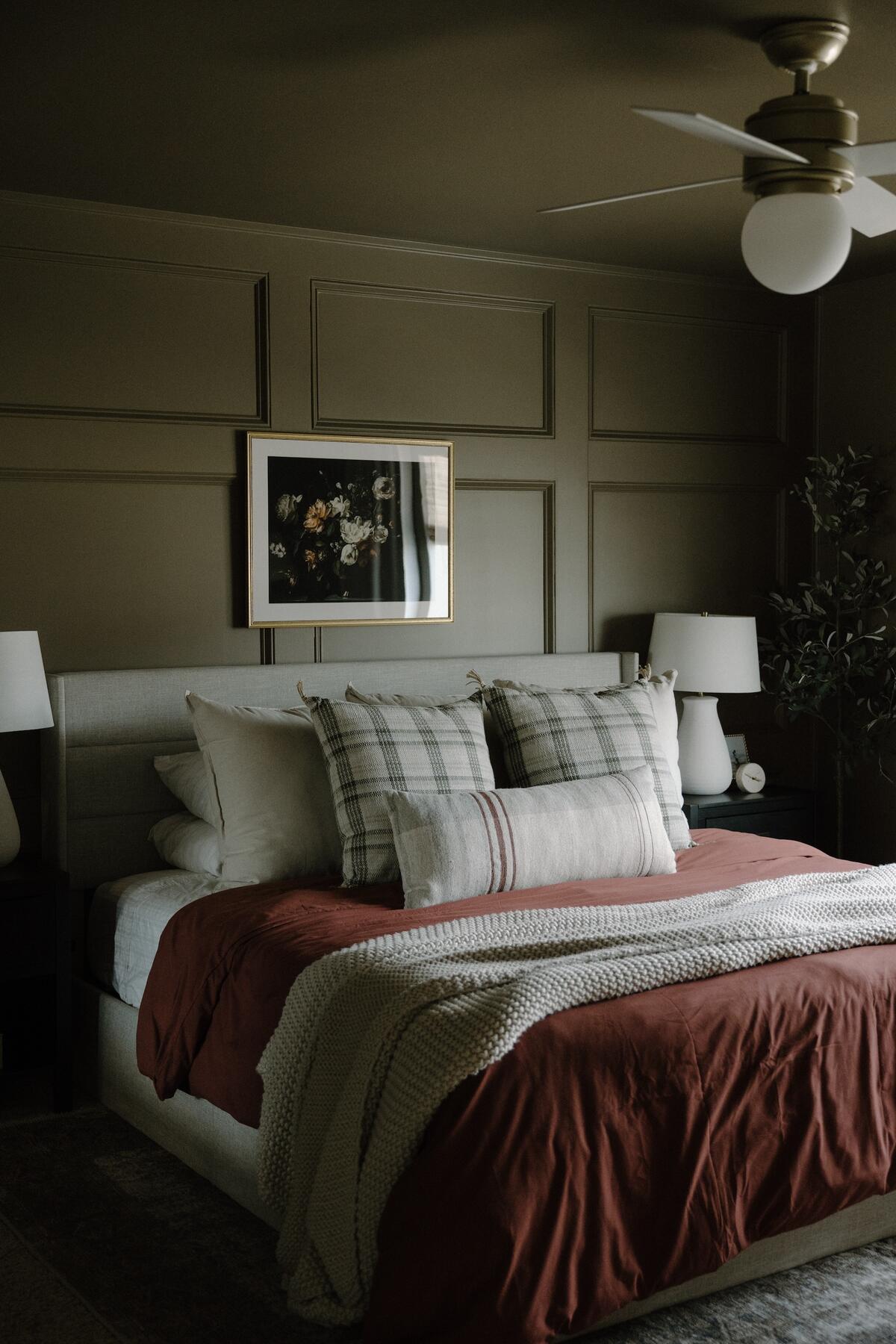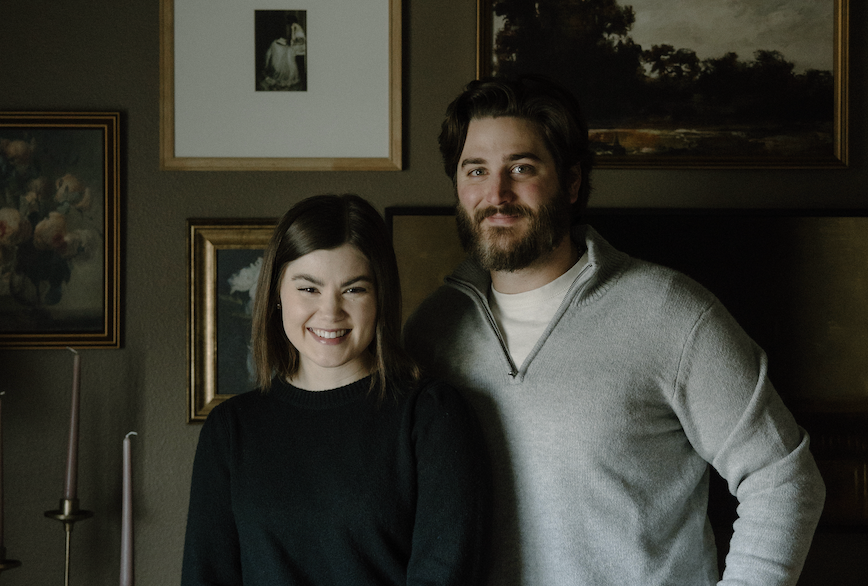In Ask an Influencer, Business of Home explores the creator economy. This week, we spoke with Jeff and Megan Hamann, the DIYers and content creators behind Home With the Hamanns.
As their Instagram shows, Jeff and Megan Hamann handle home projects in near-perfect tandem: He takes on renovation and construction, and she swoops in for decoration and design. It may come as no surprise, then, to learn that the couple’s partnership has been years in the making—from high school friends meeting at the Rock & Bowl in their Minnesota hometown to college sweethearts and eventually a married couple settling down in Fargo, North Dakota.
There, the pair purchased their first home in 2019, aided by Jeff’s renovation know-how—thanks to a day job in general construction—and Megan’s eye for interiors, to which she devotes her free time when she isn’t working as a pediatric occupational therapist. By 2021, the pair decided to start an Instagram to document their design process for family and friends, and they soon saw their audience expand far beyond Fargo. Still, their experience hasn’t been skyrocketing viral popularity—and as Megan explains, that’s not the goal. Instead, the couple are seeking a more sustainable approach to social media success.

“‘Slow and steady’ has been the motto with Home With the Hamanns,” says Megan. “Some people will wake up and have a couple hundred thousand followers overnight. Ours has just been a really steady growth in creating a community.”
Ahead, they share their best tips on finding a balance between a day job and a social media side gig, determining audience demographics, and making deeper connections with followers—while tailoring content to speak to them.
Settling on a social strategy
When Megan and Jeff first started sharing their projects on social media, they posted whatever they were working on that day. The shift came when they gained traction with users outside of their social circles. In order to sustain their sudden growth, they began thinking in terms of performance for the first time—and they started by attempting to better understand their followers. “Now, it’s much more planned out and audience-based: What do they want from us? What can they learn from us?” says Megan.
By analyzing their audience demographics—via Instagram’s Insights tab, as well as through interactions in comments and direct messages—the couple has developed a profile of their average follower: Someone in their 30s to 40s who might not be able to afford their dream home yet, but wants to find a way to love where they’re living now. The Hamanns’ approach is further defined by the understanding that this demographic is facing one of the tightest housing markets in recent years—and might even struggle to outsource projects.
“With my work in general construction, now more than ever, tradespeople are making appropriate money, and services are more expensive than ever. Getting a remodeler to come in and just to get one’s time—let alone to get multiple with competitive bids and pricing—is harder than ever,” says Jeff Hamann. “There are fewer qualified tradesmen, and demand is probably at an all-time high.”
With that information in mind, the pair have tailored their content toward helping users tackle their own projects at an affordable price. To drill down further into exactly what their audience would like to see (and, as an added bonus, to boost engagement), Megan often uses Instagram’s Poll feature to ask them directly. Otherwise, she’ll examine the account’s analytics to see what recent content has performed well, then use that information to repackage successful concepts in new formats. “It’s not reinventing the wheel: I use similar content, which saves me time, but it’s just different enough that it still feels new to our followers,” she says.
Finding a balance
Despite juggling full-time jobs on top of their home projects and social media, Megan and Jeff have found they still need to designate a fair amount of time each week to maintain their audience—roughly 40 hours. According to the pair, setting up programs like affiliate linking through the LTK shopping platform or an Amazon storefront can help bring in a passive income and make the extra hours worth your time. “I really encourage any other creators to start those as soon as possible, because it grows with you and your following,” says Megan.
Another key strategy to save time while cultivating growth: Integrate social media into your design process. While Megan typically sets aside time each week to coordinate content for the week ahead, the duo have also made a point to remain mindful of photo- and video-friendly moments throughout each project. Holding themselves accountable for consistently capturing content has not only made the pair more comfortable in front of the camera, but has also made social media part of their regular routine.

“We’re so used to recording our lives, essentially, that when we’re doing a project and Jeff’s about to do the next step of something, he’ll call me to come out to the garage and tape him doing whatever he’s doing,” says Megan. “We’ve trained ourselves to get as much content as we can.”
Fostering a connection with followers
If there’s one part of social media maintenance to prioritize, Megan recommends audience interactions. For their account, she has set the lofty goal of responding to every single direct message. Even more important, she says, is responding to comments, which ultimately tells your audience what to expect from your account.
“Sometimes on social media, even when I’m consuming Reels or TikToks, there are so many questions in the comment section, and there’s no response from the creator,” she says. “I think that shows your audience that you’re not going to show up there, and then it kind of teaches your audience not to show up there either. Engaging with them is a huge part of them engaging with you.”
Throughout the day, Megan finds spare moments to send out a few messages at a time—while watching TV at night, for example, or walking on the treadmill. She has also decided to open their page up to experiences that are slightly more vulnerable, setting the tone for deeper connections with followers. “It’s not really in our home niche, but I talk a lot about mental health on our page, because I lost my brother to suicide almost eight years ago,” she says. “It was something that I just started sharing on there, and I have had just this huge reaction from people sharing similar stories, or like they didn’t feel understood and are able to have a conversation with me, or that my post gave them the push they needed to start therapy. That has been a really unexpected thing that I never really thought I was going to share with the internet, but then it snowballed, and I shared more and more because it’s been such a cool thing to see.”





























